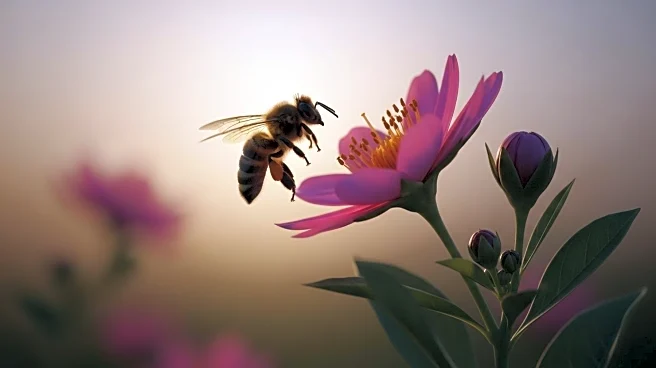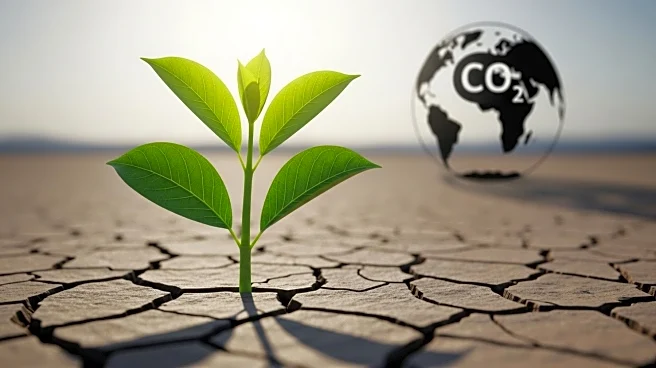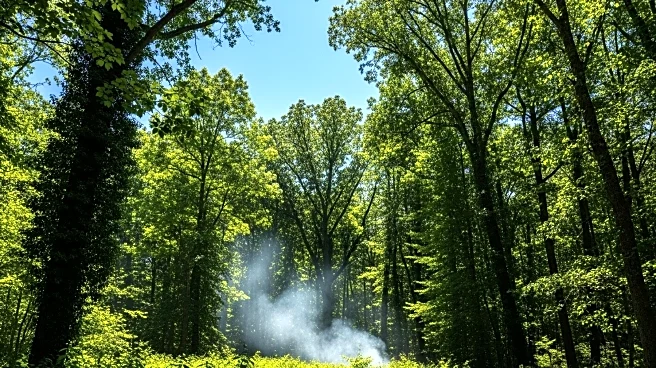What is the story about?
What's Happening?
A recent study published in Paleobiology examines the effects of a major warming event 56 million years ago, known as the Paleocene-Eocene Thermal Maximum, on pollinators and ecosystems. During this period, a significant amount of carbon was released into the atmosphere, causing Earth's temperature to rise by about 6°C over a span of 5,000 years. This warming led to the expansion of plants and their animal pollinators from dry tropical areas into new regions. Researchers analyzed fossil pollen from the Bighorn Basin in Wyoming to understand changes in pollination patterns. The study found that animal pollination became more prevalent, while wind pollination decreased, indicating a shift in plant and pollinator distributions due to the changing climate.
Why It's Important?
The findings of this study provide insights into how rapid climate change can alter ecosystems and the interactions between plants and pollinators. The historical context of the Paleocene-Eocene Thermal Maximum offers a parallel to current climate change, highlighting the potential for significant ecological shifts. Understanding these past events can inform predictions about the resilience of ecosystems and the potential for species adaptation or extinction in response to modern climate change. The study underscores the importance of monitoring and managing current carbon emissions to mitigate similar disruptions in today's ecosystems.
What's Next?
The study suggests that maintaining slower rates of environmental change could help prevent extinctions and allow ecosystems to adapt more effectively. As current climate change progresses at a much faster rate than the ancient event, there is an urgent need for policies and actions that reduce carbon emissions and support biodiversity conservation. Future research may focus on identifying specific species and ecosystems at risk and developing strategies to enhance their resilience in the face of ongoing climate change.
Beyond the Headlines
The study also raises questions about the long-term impacts of climate change on agricultural systems, which rely heavily on pollinators. As climate patterns shift, there may be a need to adapt agricultural practices to ensure food security. Additionally, the research highlights the interconnectedness of ecosystems and the potential cascading effects of climate change on biodiversity and ecosystem services.
AI Generated Content
Do you find this article useful?














